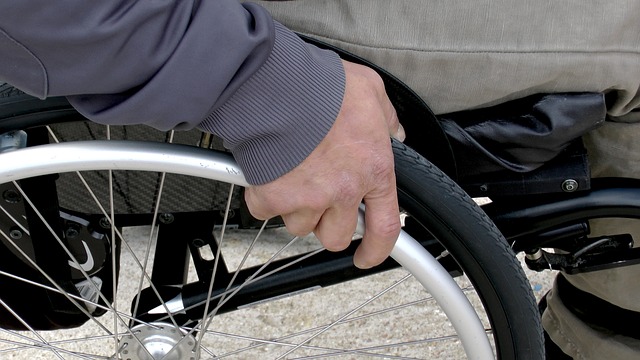Essential Vehicle Equipment for Patient Transfers
This article outlines practical, safety-focused equipment and vehicle features needed for reliable patient transfers. It covers mobility aids, infection control, communication tools, and compliance essentials to help teams prepare vehicles for nonemergency and ambulance-based transport.

Ensuring a vehicle is properly equipped for patient transfers requires attention to safety, infection prevention, ergonomics, and reliable communication. This article focuses on the physical items and systems that make transfers smoother and safer for patients and staff alike. It highlights vehicle features, mobility aids, and operational tools commonly used in nonemergency and ambulance-based transfers, while addressing training and compliance considerations.
This article is for informational purposes only and should not be considered medical advice. Please consult a qualified healthcare professional for personalized guidance and treatment.
What vehicle safety equipment is essential?
A transfer vehicle must prioritize securement and crashworthiness. Primary items include properly mounted restraint systems for stretchers and wheelchairs, ISOFIX or equivalent anchoring points where applicable, and non-slip flooring. Fire extinguishers, reflective triangles, and a basic roadside kit are necessary for roadside safety. Interior lighting that supports safe loading and unloading, plus clear signage and interior handholds, help reduce slips and falls. Vehicles should be inspected regularly to confirm that mounts, locks, and latches function correctly and that load limits for ramps and lifts are not exceeded. Compliance with regional vehicle safety standards and periodic audits helps maintain a reliable fleet.
How to manage patient mobility and ergonomics?
Mobility devices are central to transfers. A well-stocked vehicle typically carries transfer belts, adjustable stretchers with secure braking, bariatric-capable equipment when needed, and a range of wheelchairs or transit chairs. Portable patient lifts—manual or powered—can reduce caregiver strain during transfers and improve patient comfort. Ergonomic considerations include loading angles for ramps, handrail placement, and seat designs that minimize twisting when moving a patient. Training staff in safe body mechanics and using devices like slide sheets can also prevent musculoskeletal injuries among crew members while preserving patient dignity and stability.
What infection control tools should be carried?
Infection prevention is a core concern for any patient transport. Stock vehicles with single-use gloves, disposable gowns, surgical masks, and eye protection for staff. Carry hand sanitizer with at least 60% alcohol, surface disinfectant wipes suitable for clinical settings, and sealed biohazard bags for contaminated materials. A clear protocol for cleaning and ventilating the vehicle between transports reduces cross-contamination risk. For known infectious cases, consider barrier drapes and additional personal protective equipment (PPE). Maintain an inventory checklist so supplies are restocked promptly after each run, and document cleaning to support compliance and traceability.
How should communication and scheduling be handled?
Reliable communication tools improve coordination and patient safety. Equip vehicles with a vehicle-mounted radio or secure mobile device, hands-free calling options, and access to a centralized scheduling system. Mobile apps or dispatch software that integrate patient details, pickup times, and route optimization can reduce wait times and minimize missed transfers. Ensure staff use secure messaging for patient information and understand protocols for relaying changes to clinicians, families, or receiving facilities. Backup communication methods, such as satellite-capable devices or secondary phones, are valuable in areas with poor cellular coverage.
What training and certification support safe transfers?
Equipment is effective only when staff are trained. Required competencies for many services include basic life support (BLS), infection control procedures, and safe patient handling certifications. Additional training might cover wheelchair and stretcher securement, operation of powered lifts, bariatric handling, and defensive driving. Regular refresher courses and competency assessments help maintain skills and compliance. Documentation of training and certification should be maintained for each crewmember to support regulatory inspections and to inform scheduling decisions when specific patient needs require certified personnel.
How to equip for nonemergency transfers and ambulance use?
Nonemergency medical transport differs from emergency ambulance work but overlaps in many equipment needs. Vehicles used for scheduled transfers should balance comfort and clinical readiness: adjustable seating, climate control, and noise reduction support patient comfort; first-aid supplies, suction units, oxygen supply, and basic monitoring tools (e.g., pulse oximeter, blood pressure cuff) allow staff to respond to common changes in condition en route. For ambulance configurations, include more advanced stabilization equipment and secure storage for medical supplies. Logistics items—secure shelving, labeling systems, and inventory controls—help crews locate supplies quickly. Regular vehicle maintenance and calibration of clinical devices ensure equipment reliability.
Conclusion A well-equipped patient transfer vehicle integrates securement systems, mobility aids, infection control supplies, clear communication tools, and trained personnel. Attention to ergonomics and compliance reduces risk to patients and staff, while operational practices like inventory checks and documented cleaning ensure consistent readiness. Planning vehicles around the typical patient population and transfer types—nonemergency or ambulance—supports safer, more efficient service worldwide.





